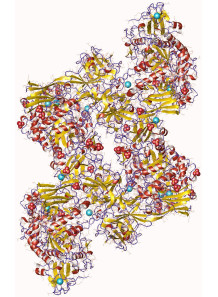Pullulanase (2000u/ml, liquid)
- Product Code: 126106
enzyme widely used in the food industry, primarily for its ability to break down pullulan, a polysaccharide found in starch, into simpler sugars
Activating Temperature: 40-65C, pH 3.5-6.0)
enzyme widely used in the food industry, primarily for its ability to break down pullulan, a polysaccharide found in starch, into simpler sugars
Activating Temperature: 40-65C, pH 3.5-6.0)
Pullulanase is an enzyme widely used in the food industry, primarily for its ability to break down pullulan, a polysaccharide found in starch, into simpler sugars. Here’s how it's typically applied in food processing:
-
Starch Modification: Pullulanase is commonly used in combination with other enzymes like amylases in starch processing. It debranches amylopectin, making it easier to convert starch into glucose, maltose, or other sugars. This process is particularly valuable in the production of syrups, like high-maltose or high-fructose syrups.
-
Brewing: In beer production, pullulanase helps to improve fermentability by breaking down complex starches into fermentable sugars, which yeast can then convert into alcohol. This process can lead to higher alcohol yields and improved beer clarity.
-
Baking: It can enhance the texture and shelf life of baked goods by modifying starch structures. Pullulanase treatment reduces retrogradation (starch recrystallization), which is a primary factor in the staling of bread.
-
Low-Calorie Foods: Pullulanase is also used to produce low-calorie sweeteners, as it assists in producing sugars that are less calorically dense. This application is common in low-sugar and sugar-free foods.
-
Dairy Processing: The enzyme may also help in lactose-free product development by aiding in the breakdown of certain carbohydrates, enhancing texture and flavor.
Currently, the FDA does not allow it to be used in food. this item It can only be used in food research.
| Mechanism | - |
| Appearance | - |
| Longevity | - |
| Strength | - |
| Storage | - |
| Shelf Life | - |
| Allergen(s) | - |
| Dosage (Range) | - |
| Recommended Dosage | - |
| Dosage (Per Day) | - |
| Recommended Dosage (Per Day) | - |
| Mix Method | - |
| Heat Resistance | - |
| Stable in pH range | - |
| Solubility | - |
| Product Types | - |
| INCI | - |
Purchase History for
Cart
No products



